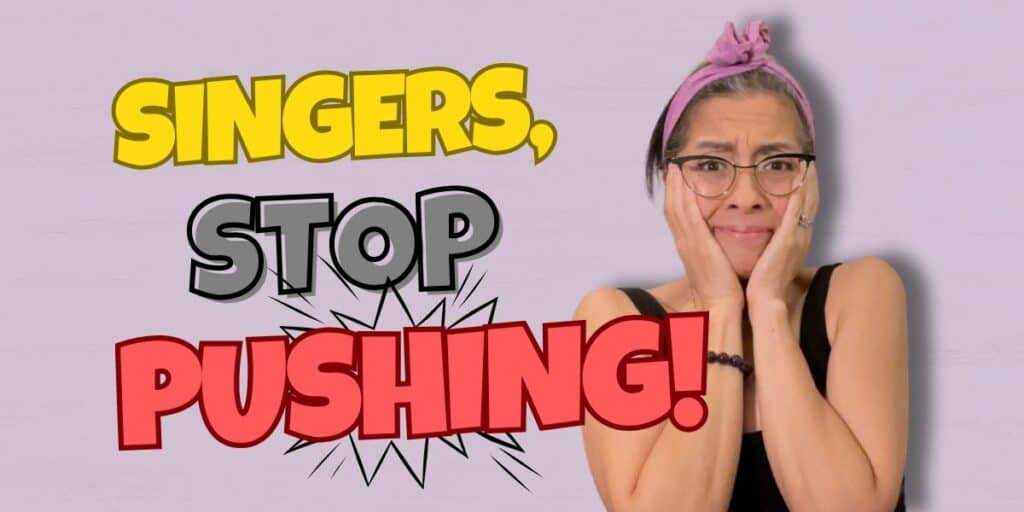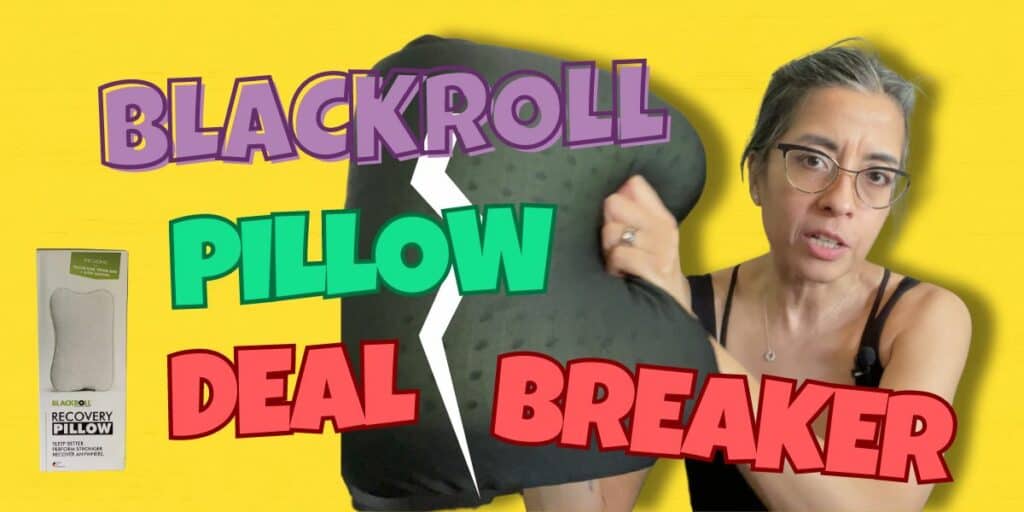Poor Proprioception is, in my experience, one of the key reasons why many people don’t have as much Movement Options as they’d like, especially when it comes to doing Flexible Movement! Proprioception can even be that obstacle between you and the bendy back you desire!
Like This Post?
Never miss a post.
Get our blog posts delivered straight to your inbox!
In this episode of MoveMedics TV we continue on with our Movement Capacity Series and I dive deep into what Proprioception is, the 2 main reasons why you may have poor proprioception, show you what it can look like, and how to improve it.
’Til next time, Be Free In Your Movement™.
x
Selina
B. Phty
This information is not medical advice. Got health concerns? Consult a real-life health professional.
Views are my own.
*Affiliate links. Your choosing to use these goes towards supporting my content creation. Thank you.
“I know what you mean. I understand your instructions. I’m trying to do it but I can’t make it happen!” That is something I have heard many times from my flexibility students. If that sounds familiar to you then make sure you watch this video where we talk all about proprioception, which in my experience, the lack of proprioception is a key limiting factor to your movement option and also a major obstacle between you and that backbend you want to do. Ready? Let’s check it out.
Hi! I’m Selina, physio from MoveMedics here to help you move better, feel better, so you can keep doing what makes you happy, for as long as you want.
We are continuing along with our Movement Capacity Series and today we are talking about proprioception, one of the nine elements of movement in my Movement Philosophy.
Proprioception is our joint position sense, our ability to tell where we are in space, and also what movement is happening where. We have receptors all throughout our bodies, proprioceptors, that are in constant communication with our brain telling your brain what is happening.
When it’s working properly you don’t even need to look and you would know your shoulder is there, your nose is there, your earlobe is there, and your wrist is there. We also know if someone comes to passively move your limbs, you would know that they have raise your shoulder up, bend your elbow, straighten your elbow out again, and they have brought your arm back down. We don’t need to look because we have proprioception.
So proprioception really is the communication between your brain and your body and movement is what maintains this communication. It’s like every time you move a part of your body, that part of your body is checking in with your brain. It’s right shoulder here, we are doing this now, everything is fine and we are ready to go. And it’s now the left hip is doing this and everything is fine down here and then we are ready for more movement.
There are two key reasons why your proprioception will be affected. First is pain and injury. A classic example for this is an ankle sprain.
You sprain your ankle, you injure the ligament, it affects the proprioceptors and that leads to a communication breakdown between your brain and the ankle, and unless you specifically rehab your ankle to restore the communication, you end up with a deficit, so instead of having five bars of strong signals of communication all the time, you end up with three bars, two bars, even just one, and we all know how frustrating it is to try to use your phone with like one bar of reception, right.
And this is a main reason why people go on to have lingering problems with the ankle after the first ankle sprain, they go on to develop chronic ankle instability where the ankle just roll with the lightest amount of disturbance, it’s not fun at all.
The second reason why you could have poor proprioception is disuse. If you don’t use it, you really don’t get to keep it, and it happens a lot easier than you’d think.
In modern day living we rarely need our full range of movement for anything, and unless you regularly visit all the spaces available and use your entire Movement Sphere™ your brain simply starts to forget about those places, and if your brain doesn’t remember those spaces exist, how would it know they are available for movement when you want to do them?
It’s like when you go to a restaurant, if you don’t see anything on the menu, you won’t know that’s available for you to order.
Another problem with modern day living is that we sit so much. We sit for work, we sit for leisure, we sit for commute, that is a main reason why so many people have shocking proprioception in their spine, and it commonly happens in two areas, where the curvature changes over so your cervical-thoracic junction here, and your thoracolumbar junction down here.
Let me show you. With a lot of sitting we end up being in this position a lot, and let’s be honest, this is comfy and easy to sit like this, I do it myself, and most people spend a lot of time like this, and then when they try to do anything with their neck extension, they would do an extension like this, they would bend really just from the middle of their neck here, and not use many other segments available, and if you then go to a class and try to do a King Cobra, try to bring your feet to your head, this is not really going to work out is it? Unless you learn to bring in the other segments that are available and go like this.
Now we’re talking, right!
And similar things happen in your thoracolumbar junction, it’s like your brain forgets that you have multiple vertebral levels there and just move this area as a chunk, and that’s why you see people when they try to do Cobras and backbend that it just looks straight, it doesn’t take on that nice round curve that we should be going for.
And if you keep working like that, often these people go on to develop back pain they complain about the, it being pinchy when they try to do any backbend. So to make it worse if you remember from the Movement Zone episode, movements that you don’t do regularly gets relegated by your brain, the boss, from Safe Zone to Alert Zone.
So let’s say you spend a whole day at work sitting at the computer working hard, and afterwards you go to some stretch and flex class or a Yoga class and you try to do backbend, you are really trying to do movement that are in your Alert Zone, movement that your brain thinks are suspicious, and trying to get your back to bend in places that your brain has forgotten, and it doesn’t work out and you start to think your back doesn’t bend, can you actually be surprised that it’s not working out? No you can’t.
So what can we do about it?
When your internal communication is crap, we can give it some external assistance. For example, we can use joint mobilisation to help with your proprioception. Joint mobilisation is a manual therapy technique that physios do, and when we mobilise a spinal segment, it sends afferent messages up from that segment to the brain.
So say I’m mobilising your T3, it really is your T3 making a hyper focused check-in call up to the brain going “Hello Brain! It’s T3 checking in here, can you hear me?”
And if we also do some soft tissue technique on the overlying muscles, like your rhomboids, your erector spinae, or your lats, which are typically muscles that has high tone, by doing some soft tissue work on them it helps them to enter a relaxation state, essentially turning down the volume of these muscles, which often are so loud they dominate their communication, but if they quiet down, then your brain can have a chance of hearing T3 calling out to it and go “Oh hello T3! I haven’t seen you for a while! How are things going? Everything fine? Sweet!”
And this is where foam rolling really shines because it does similar things, it too can help your muscles chill out and the pressure on the spine whilst not as specific as mobilisation, it’s close enough, it is effective, and more importantly it is something you can do yourself, and anything that is a self-directed healthcare thing that you can do yourself gets the thumbs up from me but!
These passive intervention, these passive external intervention alone don’t do it, you have to, you must, back it up with active voluntary movement, because remember it is movement that maintains the communication between brain and body, so use the intervention to open a window of opportunity for you to go in there to do really specific focused movement that seals the deal.
And of course it doesn’t happen overnight, you got to be consistent, you got to keep working, and you got to keep making sure you are being specific because your needs could change with time, but it is definitely possible to restore proprioception and more importantly, as you begin to practice movement in those area your brain will then put those movement back from Alert Zone to your Green, Safe Zone and know that it is ready and available for you to use when you want. Sweet huh?
In the next video we will talk about coordination, but until then tell me, are you someone who identifies with having an unbendable back? And after having watched this video has your perspective changed? Leave me a comment to let me know.
If this video has been informative, please give me a thumbs up, it will really help me grow this channel so I can help more people.
And also make sure you subscribe to my channel and ding that notification bell so when my new video comes out, it will pop up on your home screen.
And until then, thank you so much for watching and Be Free In Your Movement™







